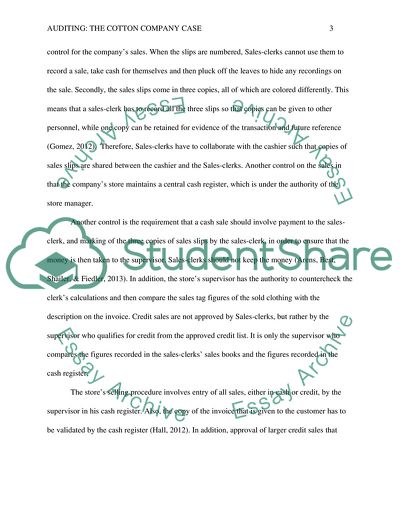Cite this document
(Auditing - The Cotton Company Case - 02 Study Example | Topics and Well Written Essays - 1500 words, n.d.)
Auditing - The Cotton Company Case - 02 Study Example | Topics and Well Written Essays - 1500 words. https://studentshare.org/finance-accounting/1853822-auditing-the-cotton-company-case-02
Auditing - The Cotton Company Case - 02 Study Example | Topics and Well Written Essays - 1500 words. https://studentshare.org/finance-accounting/1853822-auditing-the-cotton-company-case-02
(Auditing - The Cotton Company Case - 02 Study Example | Topics and Well Written Essays - 1500 Words)
Auditing - The Cotton Company Case - 02 Study Example | Topics and Well Written Essays - 1500 Words. https://studentshare.org/finance-accounting/1853822-auditing-the-cotton-company-case-02.
Auditing - The Cotton Company Case - 02 Study Example | Topics and Well Written Essays - 1500 Words. https://studentshare.org/finance-accounting/1853822-auditing-the-cotton-company-case-02.
“Auditing - The Cotton Company Case - 02 Study Example | Topics and Well Written Essays - 1500 Words”. https://studentshare.org/finance-accounting/1853822-auditing-the-cotton-company-case-02.


